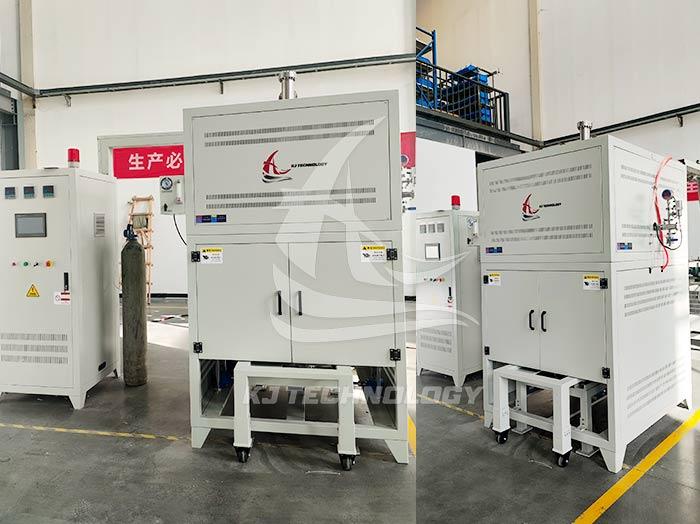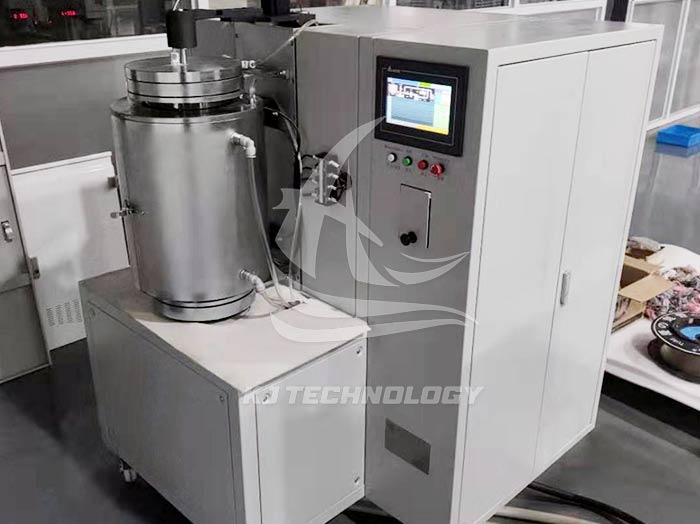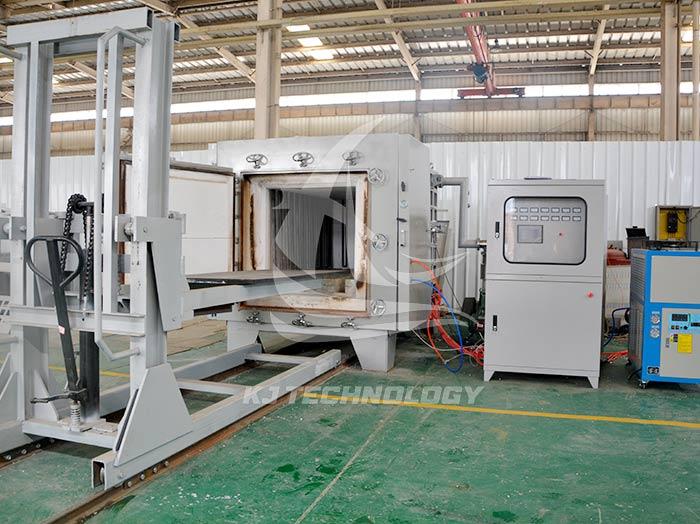Advantages of Heat Treatment Vacuum Furnace
 09-10-2025 Author: KJ technology
09-10-2025 Author: KJ technology
The heat treatment vacuum furnace exhibits significant advantages in the field of material processing by creating an oxygen free or low oxygen vacuum environment, combined with precise temperature control and process control. Its core advantages can be summarized into the following six aspects, covering key dimensions such as material performance, process quality, environmental benefits, and economy:
1. No oxidation, no decarburization: ensuring the surface integrity of materials
principle
A vacuum environment can effectively isolate oxygen and prevent metal from reacting with oxygen at high temperatures (such as oxidation and decarburization), thereby maintaining the original state of the material surface.
Advantages reflected
Surface quality: After treatment, the surface smoothness of the workpiece reaches Ra0.8 μ m or less, without the need for subsequent polishing, directly meeting high-end manufacturing requirements (such as aviation blades and precision molds).
Dimensional accuracy: Oxygen free skin generation reduces machining allowance, and in typical cases, mold dimensional tolerances can be controlled.
Material utilization rate: Avoid material loss caused by oxidation, such as improving material utilization rate of stainless steel parts after vacuum treatment.
2. Degassing and Purification: Enhancing the Intrinsic Quality of Materials
principle
The vacuum environment promotes the precipitation of gases (such as hydrogen and nitrogen) inside the material by reducing pressure, while utilizing high temperature to evaporate adsorbed impurities, achieving deep purification.
Advantages reflected
Eliminating hydrogen embrittlement: After vacuum degassing, the hydrogen content of titanium alloys and high-strength steels decreases, and the fatigue life is improved.
Reduce porosity: After vacuum treatment, the porosity of aluminum alloy die-casting parts decreases, and the mechanical properties (such as tensile strength) are improved.
Improving magnetic performance: After vacuum annealing, the coercivity (Hc) of neodymium iron boron permanent magnets is increased, and the stability of remanence (Br) is improved.
Typical Case
The aircraft engine turbine disk is treated with vacuum hot isostatic pressing (HIP) to increase density and fatigue limit.
After vacuum annealing of semiconductor silicon wafers, the oxygen precipitation density decreases and the minority carrier lifetime is extended, meeting the requirements of IGBT devices.
3. Accurate temperature control and uniformity: achieving high-performance heat treatment
principle
The vacuum furnace is equipped with a high-precision temperature control system (± 1 ℃) and a forced circulation heating/cooling system to ensure the uniformity of the temperature field inside the furnace (within ± 5 ℃).
Advantages reflected
Microstructure control: After vacuum quenching, the martensitic structure of high-speed steel is uniform and fine, with higher hardness and improved wear resistance of the cutting edge.
Precise control of phase transition: After vacuum solution treatment of nickel based high-temperature alloys, the size of the γ 'phase is controlled within 50nm, and the high-temperature strength is improved.
Thin walled component processing: The deformation of aviation thin-walled structural components after vacuum processing is low, far superior to air furnaces.
4. Energy conservation and environmental protection: reducing overall costs
principle
The vacuum environment reduces heat convection losses and, combined with efficient insulation layer design, results in higher thermal efficiency.
Advantages reflected
Energy consumption reduction: Single batch processing consumes less energy than air furnaces.
Non polluting emissions: No need to protect gases (such as nitrogen, argon) or quenching oil, reducing VOCs emissions annually.
Waste reduction: Oxygen free skin is generated, reducing the cost of waste disposal.
Economic analysis
Equipment investment payback period: Although the initial cost of vacuum furnaces is high, the price difference can be recovered through energy saving and improved yield rate.
5. Process flexibility: Adapt to diverse needs
Multi process integration
A vacuum furnace can achieve various processes such as quenching, tempering, annealing, brazing, sintering, carburizing, etc., reducing equipment footprint and replacement time.
Special process support
Local processing: Local vacuum processing of the workpiece is achieved through masking or induction heating, such as quenching the gear tooth surface while maintaining the toughness of the core.
Gradient heat treatment: Control the temperature of the furnace partition to achieve a composite performance of high hardness on the material surface and high toughness in the core.
Composite material processing: The connection of dissimilar materials such as metal ceramic and metal polymer can be simultaneously completed under vacuum environment, and the joint strength reaches more than 80% of the base material.
Typical Applications
The automotive transmission gears adopt vacuum carbonitriding, which results in higher surface hardness, improved wear resistance, and extended service life.
After vacuum annealing, the residual stress of the 3D printed titanium alloy stent is reduced and the size is stable, meeting the requirements of medical implants.
6. Intelligence and automation: improving production efficiency
Technical configuration
Modern vacuum furnaces integrate functions such as PLC control system, infrared/thermocouple dual-mode temperature measurement, online monitoring of vacuum degree, and process data traceability.
Advantages reflected
Unmanned operation: Automated loading and unloading of materials is achieved through industrial robots, increasing single shift production capacity and reducing labor costs.
Process stability: Intelligent algorithms automatically compensate for temperature fluctuations, with small performance differences between batches, far superior to manual control.
Remote operation and maintenance: Supports 5G+cloud platforms to achieve real-time monitoring of device status, fault warning, and remote optimization of process parameters.
industry impact
In the aerospace field, the intelligent transformation of vacuum furnaces has shortened the processing cycle of engine blades and increased annual production capacity.
In the field of new energy vehicles, the automation rate of battery material vacuum processing lines is high, and the daily production capacity of a single line is higher, meeting the needs of large-scale production.








